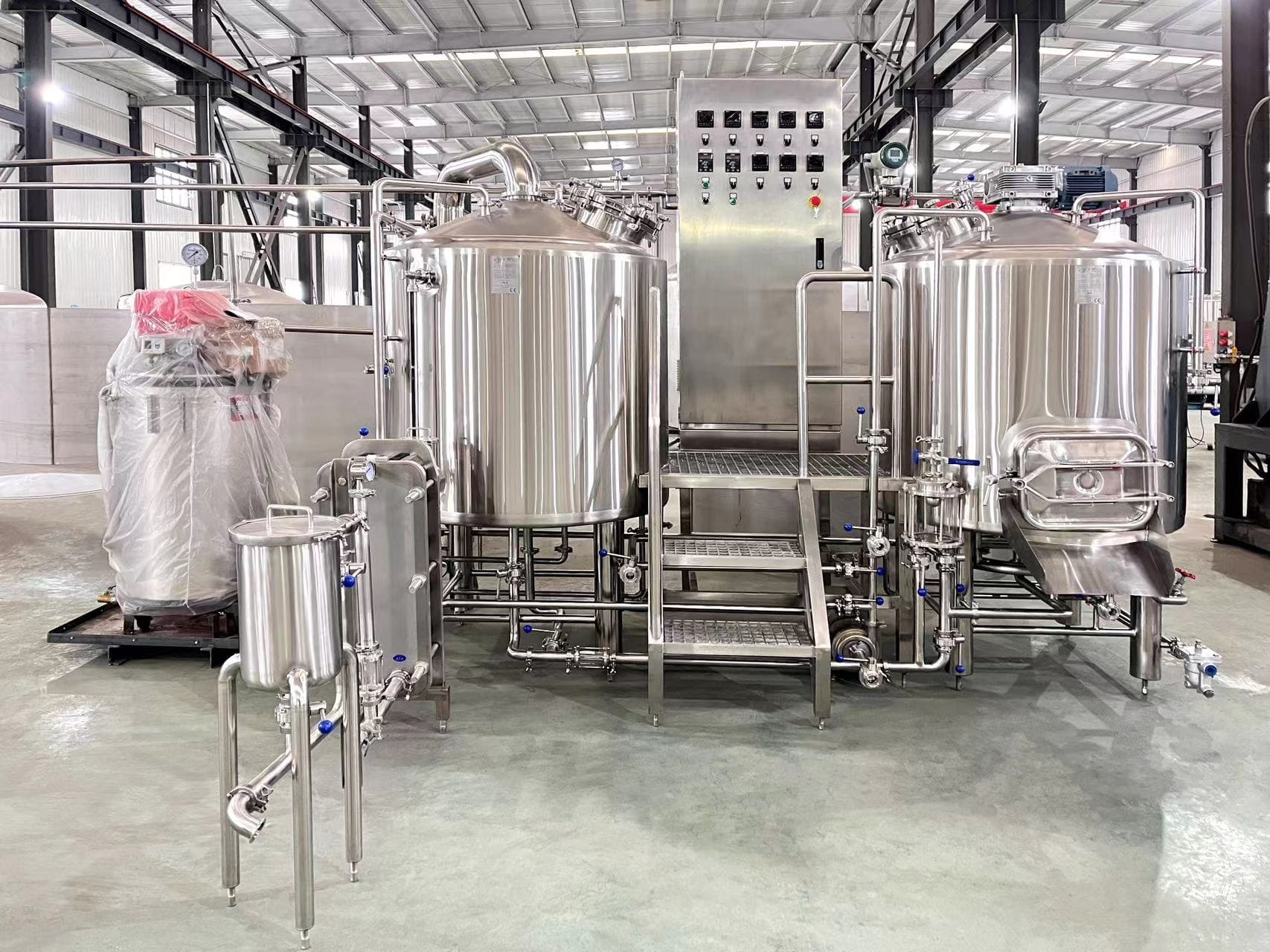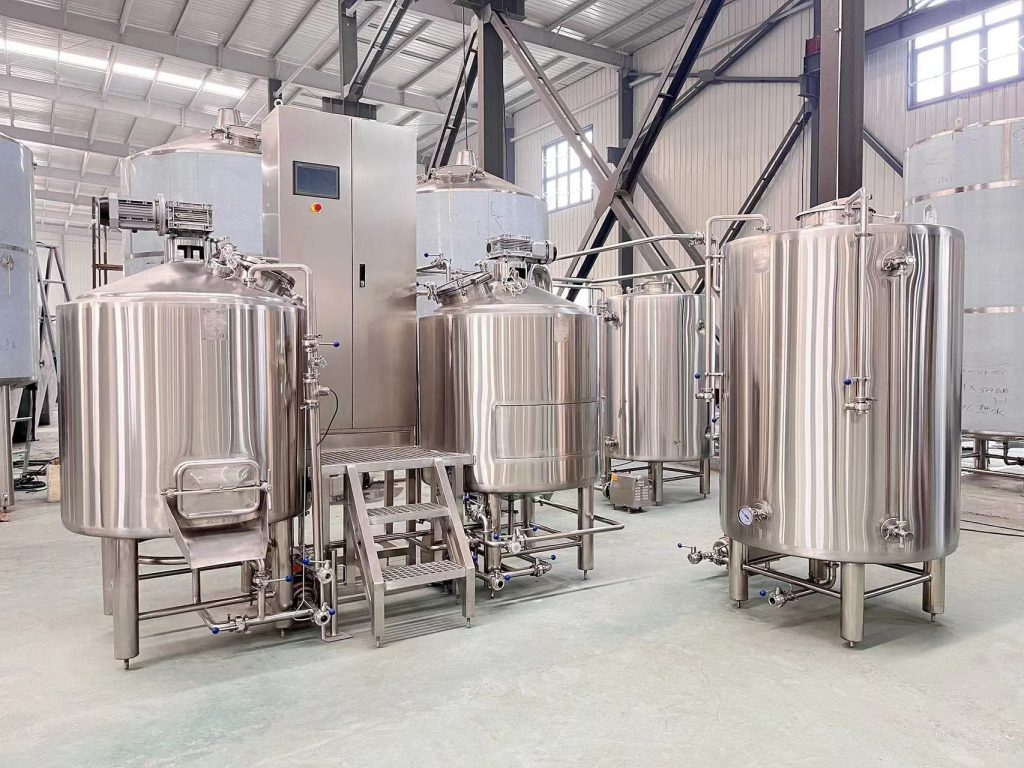The brewing industry requires specialized equipment designed to handle the intricate processes involved in producing high-quality beer. From fermentation tanks to bottling lines, the right brewing equipment can make all the difference in creating a consistent, flavorful, and marketable product. In this comprehensive guide, we’ll explore the best brewing equipment options available, their features, and how to choose the right system for your needs.
best brewing equipment Categories
| Equipment Type | Description |
|---|---|
| Brewhouse | The brewhouse is the heart of the brewing operation, where the mashing, lautering, and wort boiling processes take place. It typically includes a mash tun, lauter tun, and brew kettle. |
| Fermentation System | Fermentation tanks are essential for converting the wort into beer. These vessels are designed to maintain precise temperature and pressure control during the fermentation process. |
| Bright Beer Tank | Also known as conditioning tanks, these vessels are used for conditioning, carbonating, and clarifying the beer before packaging. |
| Packaging Line | The packaging line includes equipment for bottling, canning, or kegging the finished beer product. This may include fillers, cappers, labelers, and more. |
| Cleaning and Sanitizing Equipment | Proper cleaning and sanitizing equipment, such as caustic and acid tanks, spray balls, and clean-in-place (CIP) systems, ensure the brewing environment and equipment are free from contaminants. |

The Brewing Process
The brewing process is a delicate art that requires precision and attention to detail. Here’s a brief overview of the steps involved:
- Milling: The first step is to mill the malted grains, which exposes the starches and enzymes necessary for the mashing process.
- Mashing: During mashing, the milled grains are mixed with hot water in the mash tun, allowing the enzymes to convert the starches into fermentable sugars.
- Lautering: The lautering process separates the sweet wort (the liquid containing the dissolved sugars) from the spent grains.
- Boiling: The wort is transferred to the brew kettle, where it is boiled with hops, which impart bitterness, aroma, and flavor to the beer.
- Whirlpooling: After boiling, the wort is whirlpooled to separate the trub (solid hop and grain particles) from the clarified wort.
- Cooling: The hot wort is rapidly cooled to prepare it for fermentation.
- Fermentation: The cooled wort is transferred to the fermentation tanks, where yeast is added to convert the sugars into alcohol and carbon dioxide.
- Conditioning: After fermentation, the beer is conditioned in bright beer tanks, where it is carbonated, clarified, and prepared for packaging.
- Packaging: The final step is to package the beer into bottles, cans, or kegs for distribution and consumption.
best brewing equipment Capacity and Layout
| Capacity | Space Requirements | Design Considerations |
|---|---|---|
| Small-scale (1-10 BBL) | 1,000 – 3,000 sq. ft. | Compact, efficient layout with potential for future expansion. |
| Mid-scale (10-30 BBL) | 3,000 – 10,000 sq. ft. | Modular design for easy scalability and maintenance. |
| Large-scale (30+ BBL) | 10,000+ sq. ft. | Customizable layouts with dedicated areas for each process. |
Customization and Automation Options
Many brewing equipment manufacturers offer customization options to tailor the system to your specific needs. These may include:
- Automation features for improved efficiency and consistency
- Specialized temperature control systems
- Custom vessel sizes and configurations
- Integration with existing infrastructure or building design
best brewing equipment Suppliers and Price Range
| Supplier | Price Range (USD) | Notable Features |
|---|---|---|
| Alfa Laval | $50,000 – $2,000,000+ | High-quality stainless steel equipment, modular designs, energy-efficient. |
| GEA Brewery Systems | $100,000 – $5,000,000+ | Advanced automation, expert engineering, custom solutions. |
| Metalcraft Brewery Equipments | $20,000 – $1,000,000+ | Affordable, customizable systems for small and mid-scale breweries. |
| Criveller Group | $80,000 – $3,000,000+ | Innovative designs, focus on sustainability and energy efficiency. |
| Meura | $40,000 – $1,500,000+ | Wide range of options for craft and mid-scale breweries. |

Installation, Operation, and Maintenance
| Consideration | Description |
|---|---|
| Installation | Proper installation is crucial for optimal performance and safety. Most suppliers offer installation services or detailed instructions. |
| Operator Training | Thorough training is recommended to ensure efficient operation and maintenance of the equipment. |
| Cleaning and Sanitation | Regular cleaning and sanitation processes are essential to prevent contamination and maintain product quality. |
| Preventive Maintenance | Scheduled maintenance checks and part replacements can extend the lifespan of the equipment and prevent costly breakdowns. |
| Regulatory Compliance | Brewing equipment must comply with local and federal regulations regarding food safety, environmental impact, and occupational health. |
Choosing the Right best brewing equipment Supplier
Selecting the right supplier is crucial for ensuring you receive high-quality equipment that meets your specific needs. Here are some factors to consider:
| Factor | Description |
|---|---|
| Experience and Reputation | Look for suppliers with a proven track record and positive customer reviews in the brewing industry. |
| Product Quality and Durability | Assess the materials, construction, and overall build quality of the equipment to ensure longevity. |
| Customization Options | Consider suppliers that offer customizable solutions to tailor the equipment to your unique requirements. |
| Customer Support and Service | Evaluate the level of technical support, maintenance services, and after-sales assistance provided by the supplier. |
| Delivery and Installation | Inquire about delivery logistics, installation services, and any additional costs associated with these processes. |
| Warranty and Guarantees | Review the warranty terms and any performance guarantees offered by the supplier. |
Pros and Cons of Different Brewing Equipment Types
| Equipment Type | Pros | Cons |
|---|---|---|
| Brewhouse | – Precise control over mashing and wort production – Consistent quality and flavor profile – Efficient use of raw materials | – High initial investment cost – Requires specialized knowledge and training |
| Fermentation System | – Allows for optimal fermentation conditions – Facilitates uniform carbonation and conditioning – Scalable for various batch sizes | – Expensive temperature control systems – Regular cleaning and maintenance required |
| Packaging Line | – Streamlines the packaging process – Ensures consistent fill levels and sealing – Improves product shelf-life | – High initial cost for automated lines – Potential for bottlenecks or downtime |
| Cleaning and Sanitizing Equipment | – Crucial for maintaining product quality and safety – Prevents cross-contamination and off-flavors – Extends the lifespan of other equipment | – Requires specialized chemicals and training – Additional time and labor required for cleaning processes |

FAQ
| Question | Answer |
|---|---|
| What is the typical lifespan of brewing equipment? | With proper maintenance and care, high-quality brewing equipment can last 10-20 years or more. However, some components may need to be replaced more frequently due to wear and tear. |
| Can brewing equipment be leased or rented? | Yes, many suppliers offer leasing or rental options for brewing equipment, which can be a more cost-effective solution for smaller or start-up breweries. |
| Is it possible to upgrade or expand an existing brewing system? | Absolutely! Many brewing equipment manufacturers offer modular designs that allow for easy expansion or upgrades as your brewery grows. |
| How important is energy efficiency in brewing equipment? | Energy efficiency is a crucial consideration, as brewing is an energy-intensive process. Investing in energy-efficient equipment can significantly reduce operating costs and environmental impact over time. |
| What are the key factors that affect the overall cost of brewing equipment? | The primary cost factors include the capacity and scale of the system, the level of automation and customization, the materials used (e.g., stainless steel vs. other metals), and the supplier’s reputation and expertise. |

